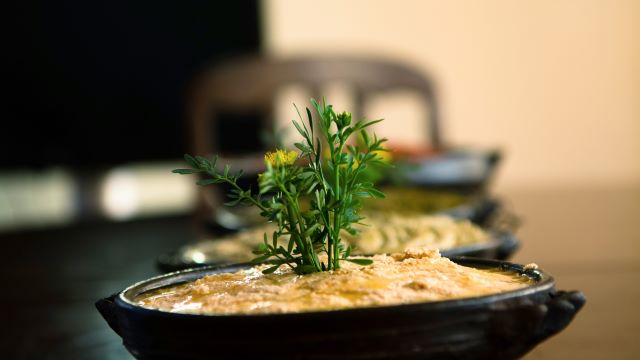By Jonas Loubin
In the crowded markets of Addis Ababa, where the air is thick with the scent of chilies and roasted coffee, Ethiopian cuisine reveals itself as both a feast and a story. Bold spices, vibrant colors, and a tradition of communal dining shape a food culture that is as much about connection as nourishment. Each dish—whether fiery or mellow, elaborate or humble—carries with it centuries of history and an enduring sense of place.
The Heart of Flavor: Berbere
At the core of Ethiopian cooking lies berbere, a brick-red spice blend whose potency defines the country’s cuisine. Made from sun-dried chili peppers, garlic, ginger, fenugreek, coriander, and an array of other ingredients, berbere imparts heat that is layered rather than blunt, smoky rather than searing. It is less a single seasoning than a cultural cornerstone.
In households across Ethiopia, berbere is often ground and mixed by hand, with recipes passed quietly through generations. The result is an infinite spectrum of variations—some sharper with ginger, others heavy with clove or cardamom—each reflective of family taste and regional influence.
Injera: Bread as Foundation
Every Ethiopian meal rests on injera, a sour, spongy flatbread made from teff, a native grain high in protein and iron. Pale brown in color and porous in texture, injera doubles as both plate and utensil. Stews and sautéed dishes are heaped on wide rounds of the bread, and diners tear strips from the edges to scoop up each bite.
The tang of fermentation gives injera its unmistakable flavor, balancing the heat of the stews. It slows the pace of eating, encouraging conversation and the kind of shared intimacy that defines Ethiopian dining.
Doro Wat: The King of Stews
If injera is the foundation, doro wat is the crown. This rich chicken stew is often described as the national dish of Ethiopia. Built slowly, layer upon layer, it begins with onions simmered until they nearly dissolve, joined by berbere, garlic, and clarified butter known as niter kibbeh. Chicken pieces are left to absorb the sauce, which thickens into something closer to paste than broth.
Hard-boiled eggs, steeped in the stew until stained a deep red, complete the dish. Eaten with injera, doro wat embodies the balance of fire and tang that defines the cuisine.
Kitfo: A Bold Tradition
For those who prize intensity, kitfo offers a different kind of experience. Finely minced raw beef, seasoned with mitmita—a chili powder spiked with cardamom and salt—and niter kibbeh, it is Ethiopia’s answer to steak tartare. Traditionally prepared for holidays and special occasions, kitfo carries ceremonial weight as well as culinary daring.
Served alongside ayib, a soft cheese, and kocho, a flatbread made from the enset plant, the dish embodies the Ethiopian preference for contrasts: heat tempered by mildness, richness softened by starch.
Tibs: Simplicity at the Hearth
Tibs, by contrast, is less ceremonial but no less beloved. Strips of beef or lamb are sautéed with onions, garlic, and sometimes peppers, arriving at the table sizzling in clay dishes. Variations range from mild to aggressively spiced, depending on the cook’s hand and the occasion.
Often paired with cold beer or honey wine (tej), tibs carries a celebratory air—less ritual than gathering, less symbolic than joyful.
Shiro: Comfort and Sustenance
On fasting days, when meat and dairy are set aside, shiro takes the table. This thick stew of chickpeas or lentils, ground into a smooth flour and simmered with onions, garlic, and berbere, is one of the simplest and most nourishing of Ethiopian staples. Creamy, fiery, and deeply filling, it remains a dish of both everyday comfort and spiritual discipline.
A Cuisine of Community
To eat in Ethiopia is to encounter more than ingredients and techniques. Meals are shared from the same platter, hands reaching toward the center, flavors crossing from one dish to another. Each bite becomes part of a larger whole, the meal itself a gesture of generosity and kinship.
From the layered complexity of berbere to the quiet richness of shiro, Ethiopian cuisine offers not only sustenance but also a reflection of a society where food remains a bridge between past and present, individual and community.
Sources
- Marcus, Harold G. A History of Ethiopia. University of California Press, 2002.
- Davidson, Alan. The Oxford Companion to Food. Oxford University Press, 2014.
- Lyons, Diane. The Archaeology of Ethiopia’s Traditional Cuisine. University of Toronto Press, 2019.
- Ethiopian Orthodox Tewahedo Church publications on fasting and food traditions.


